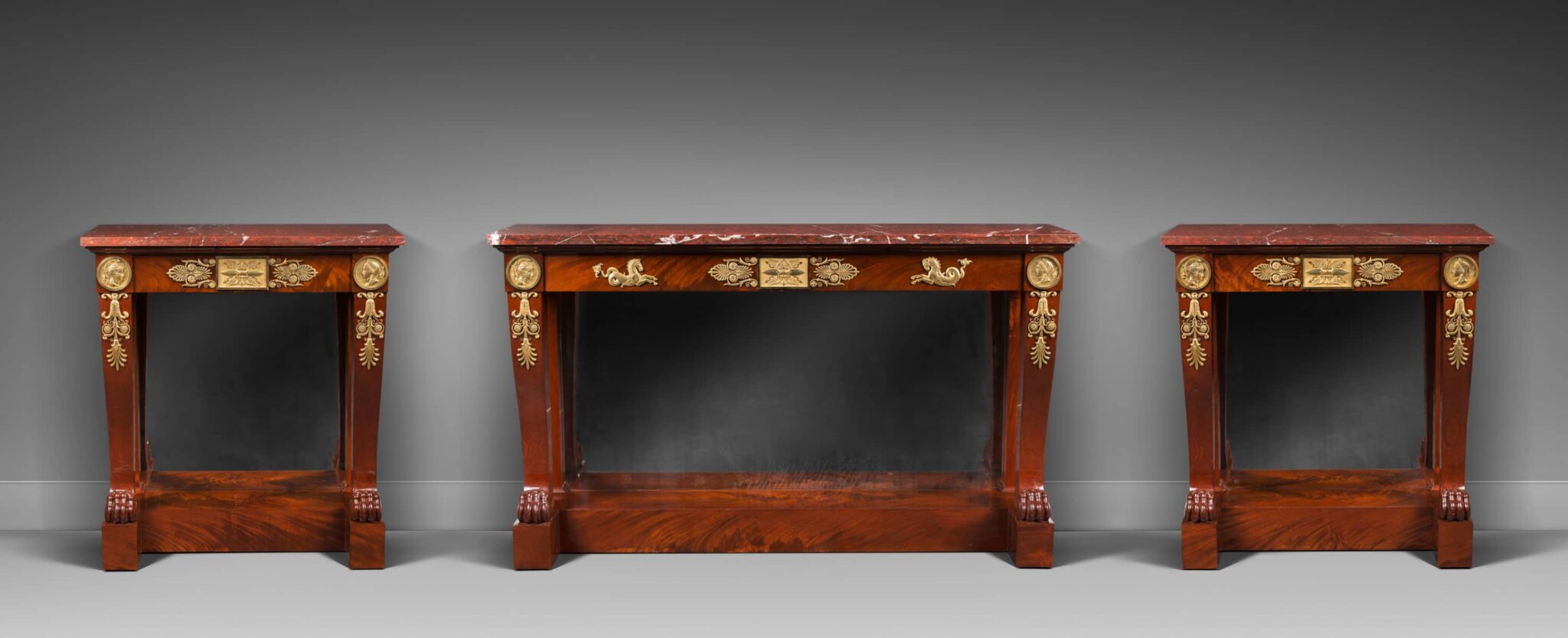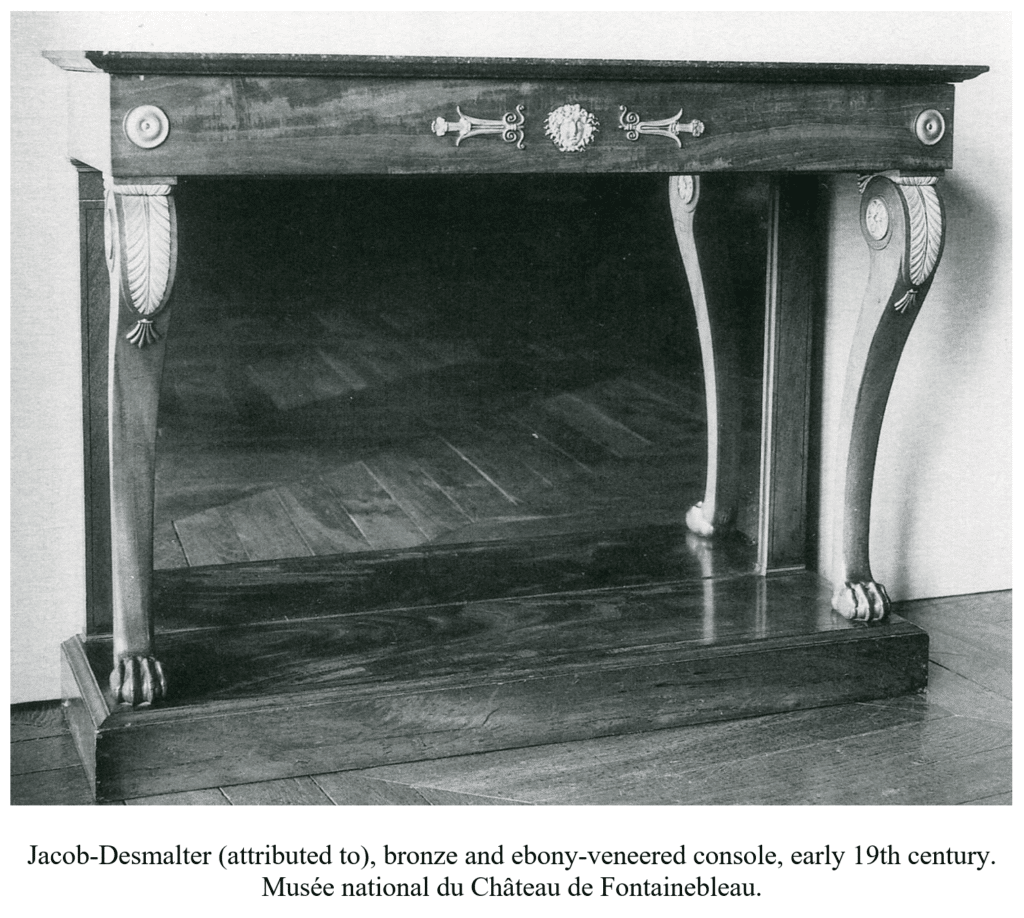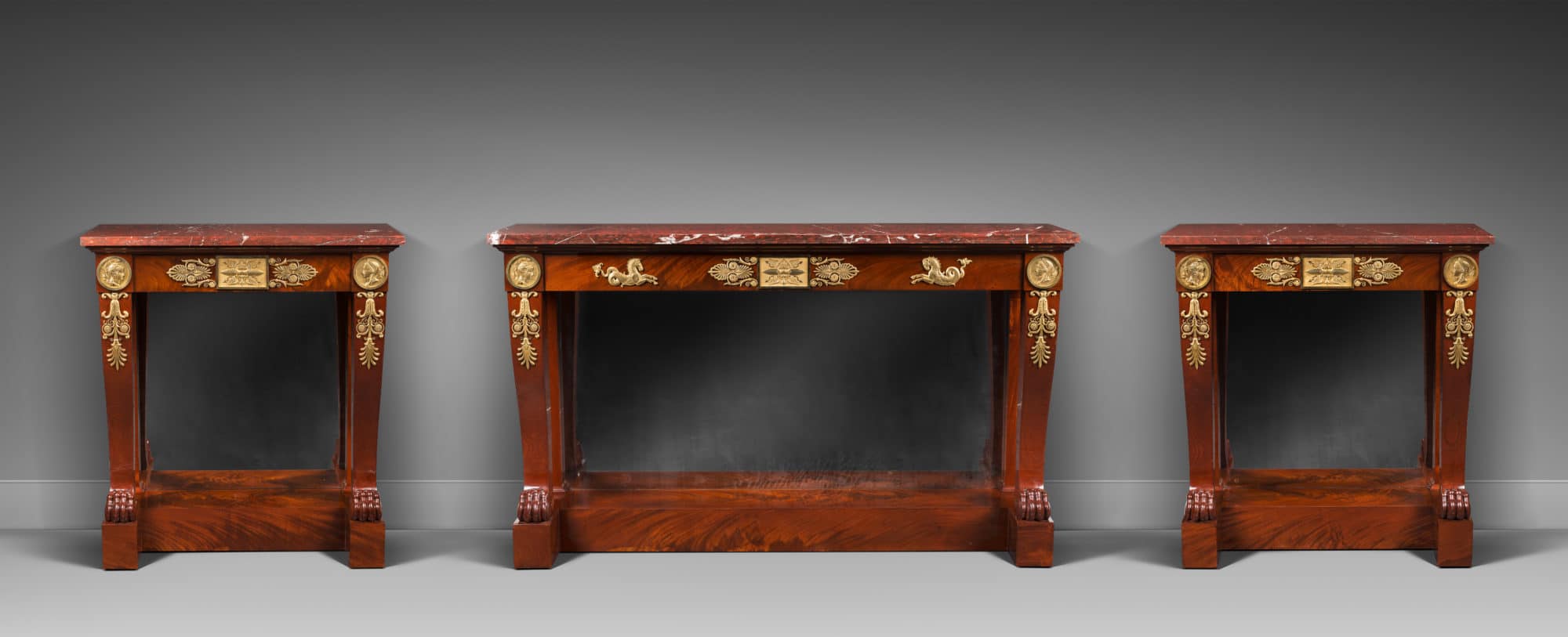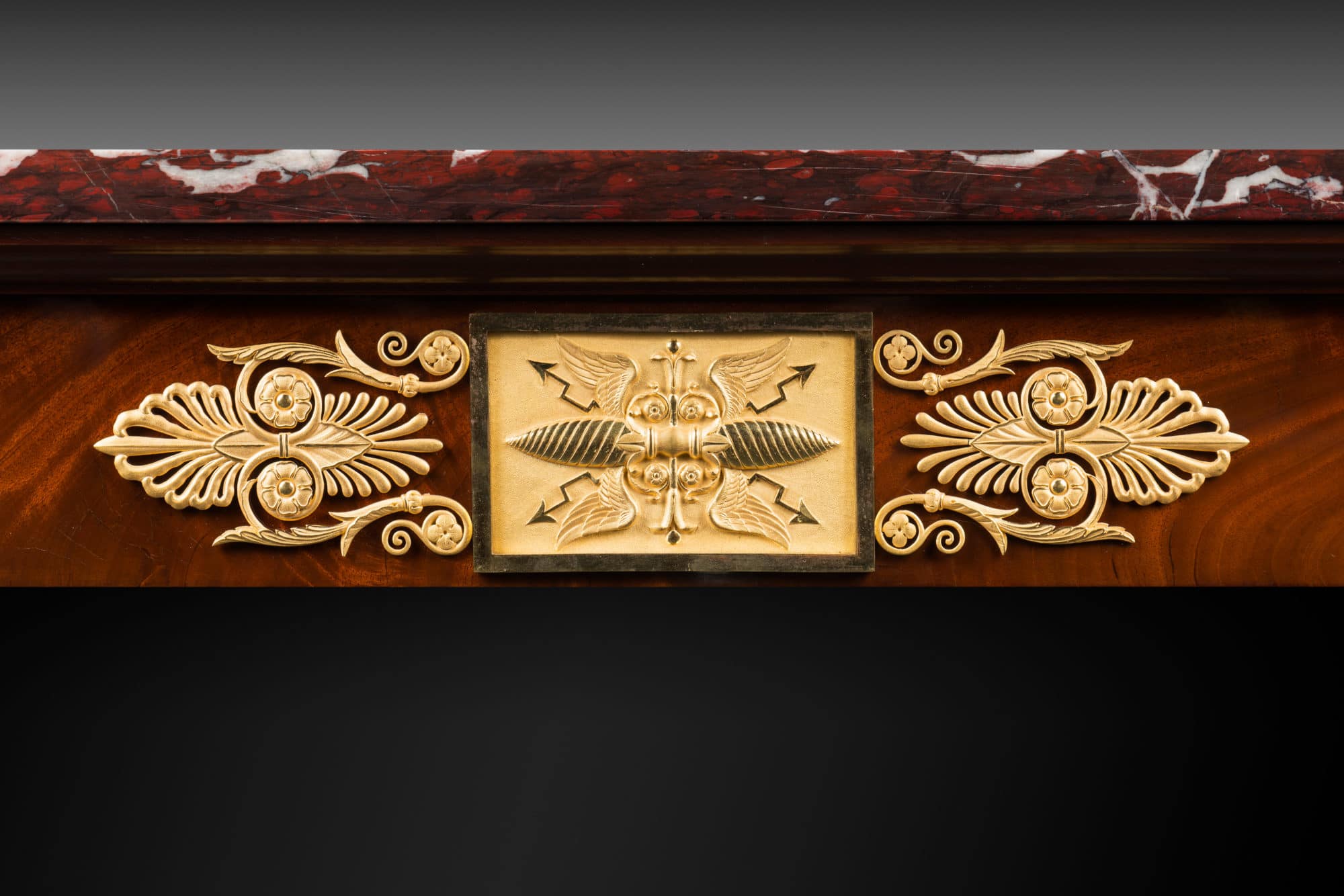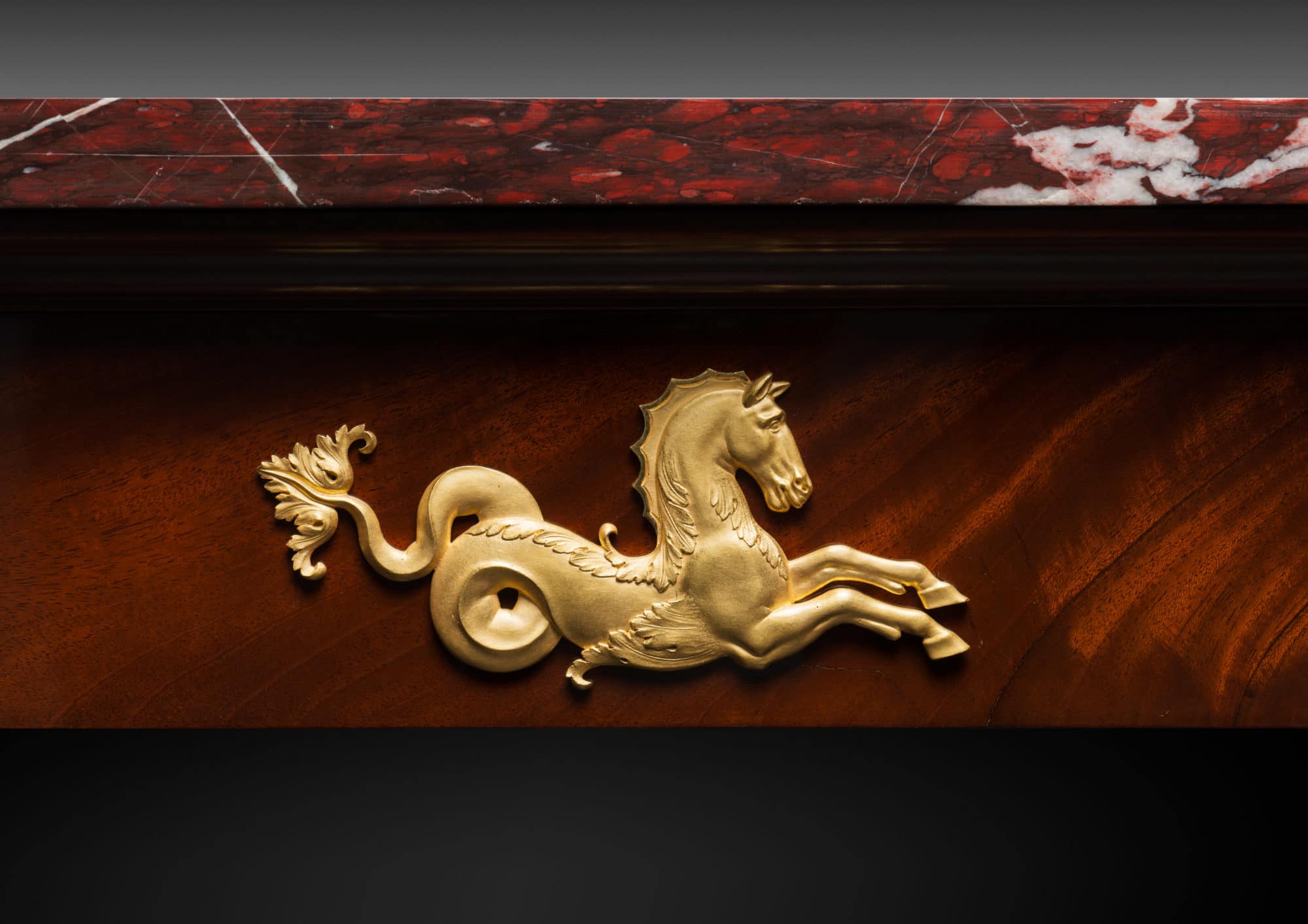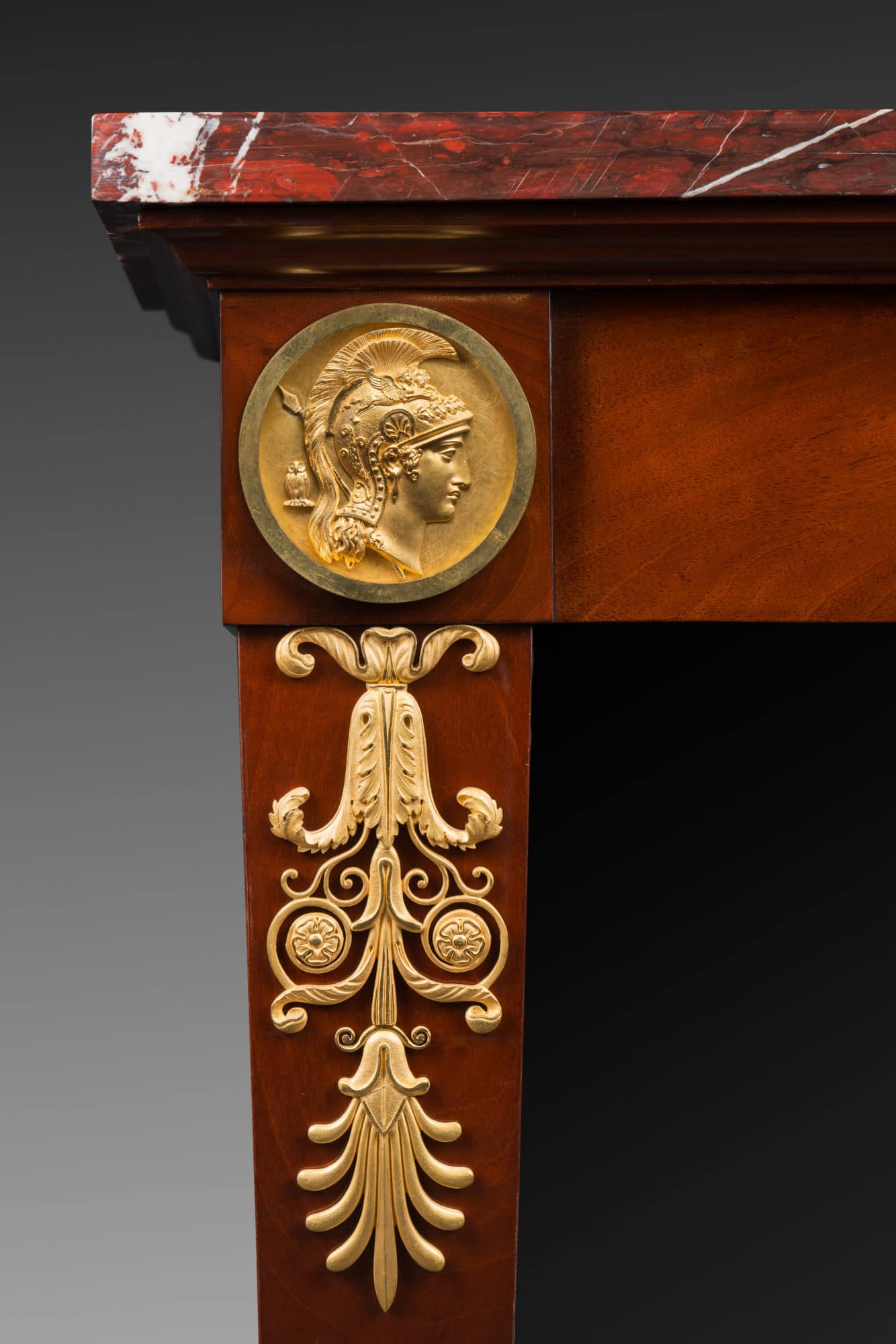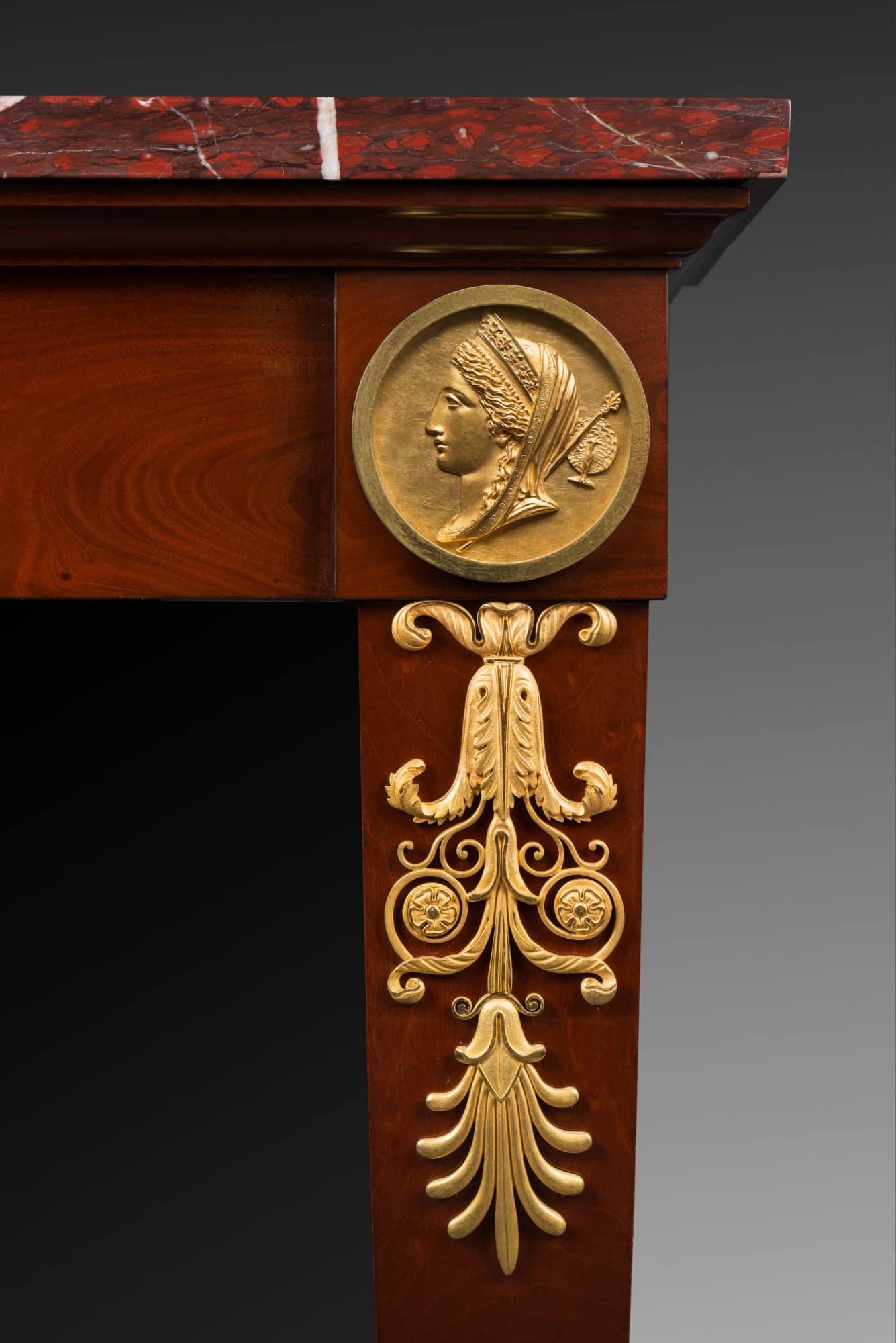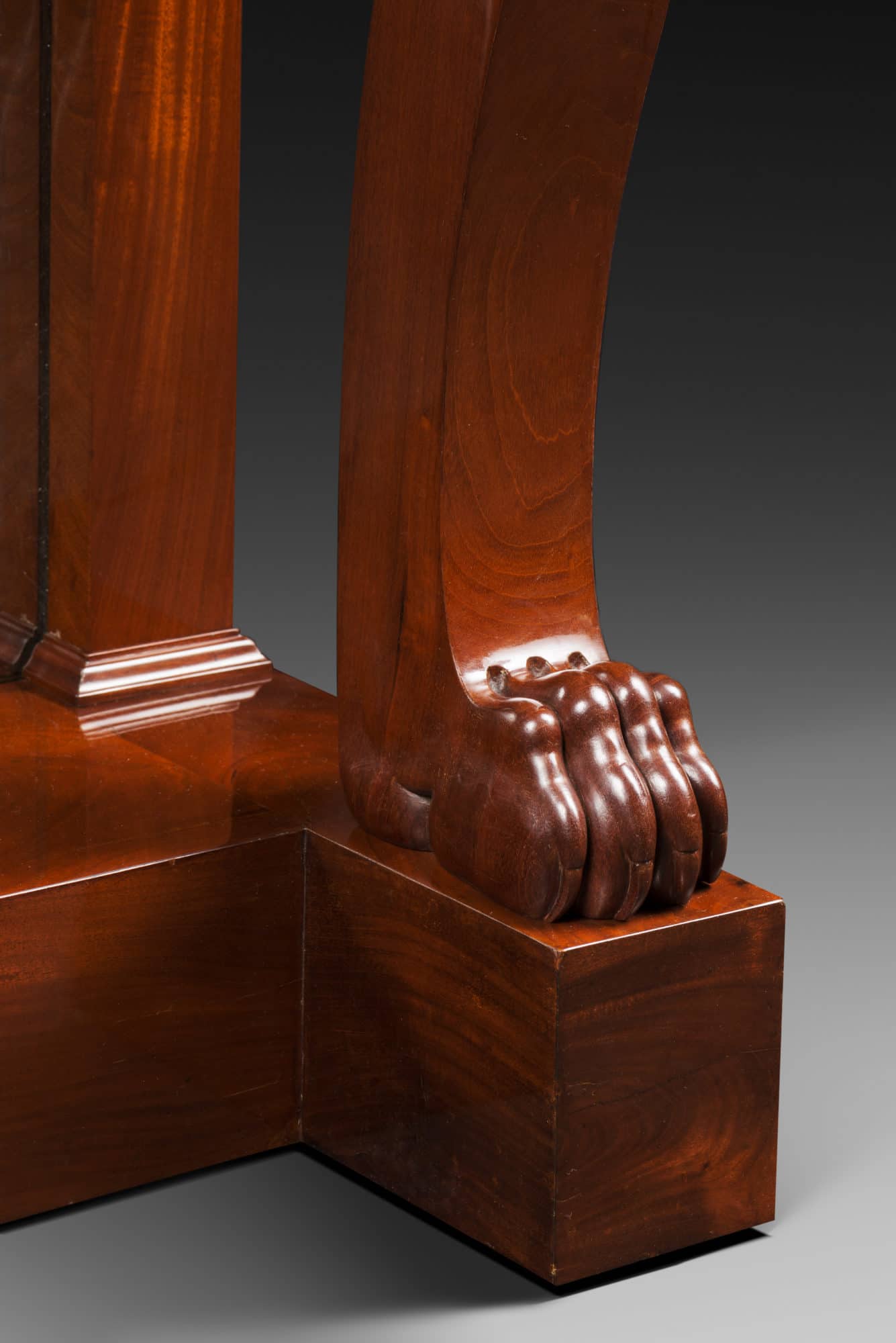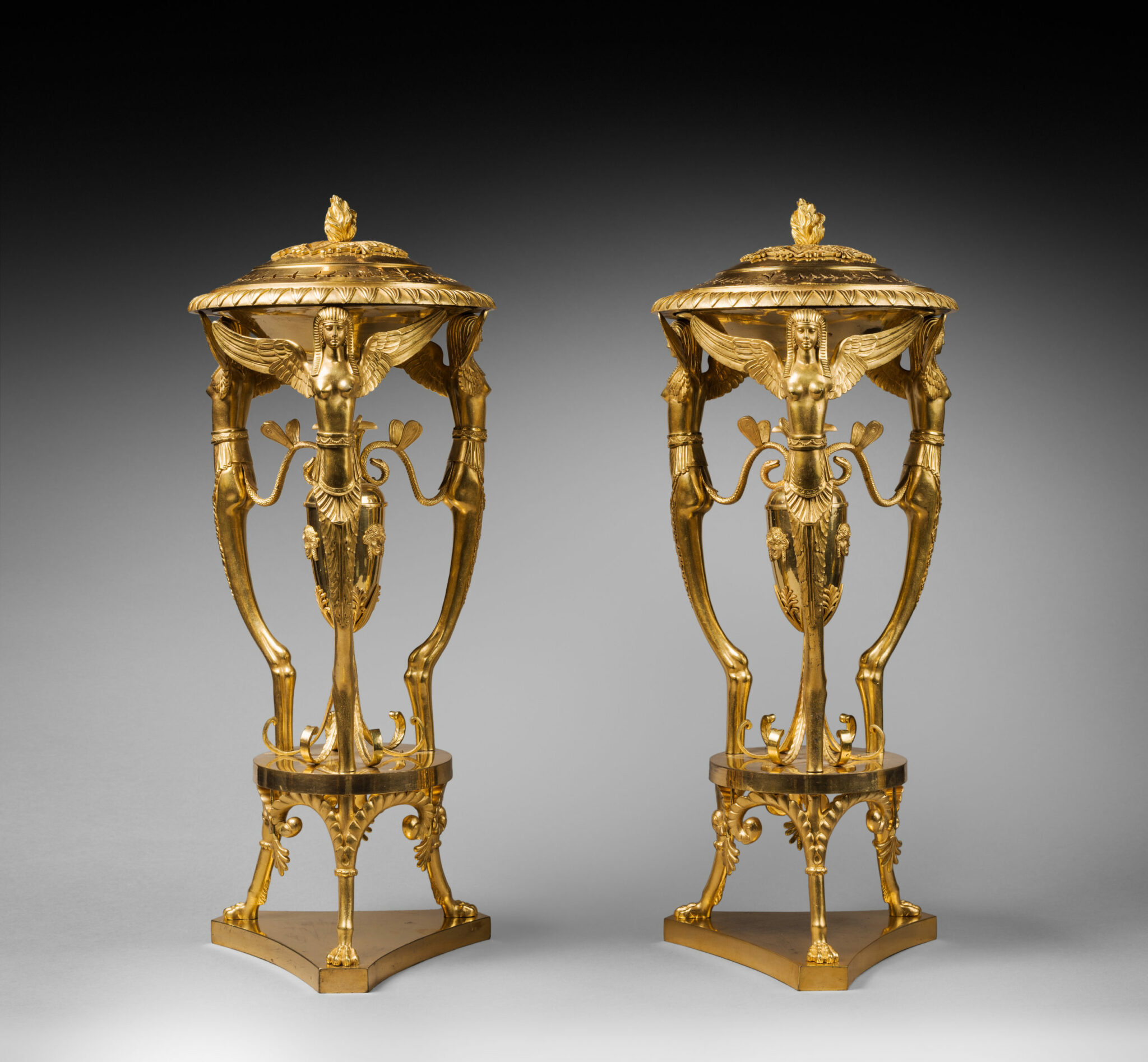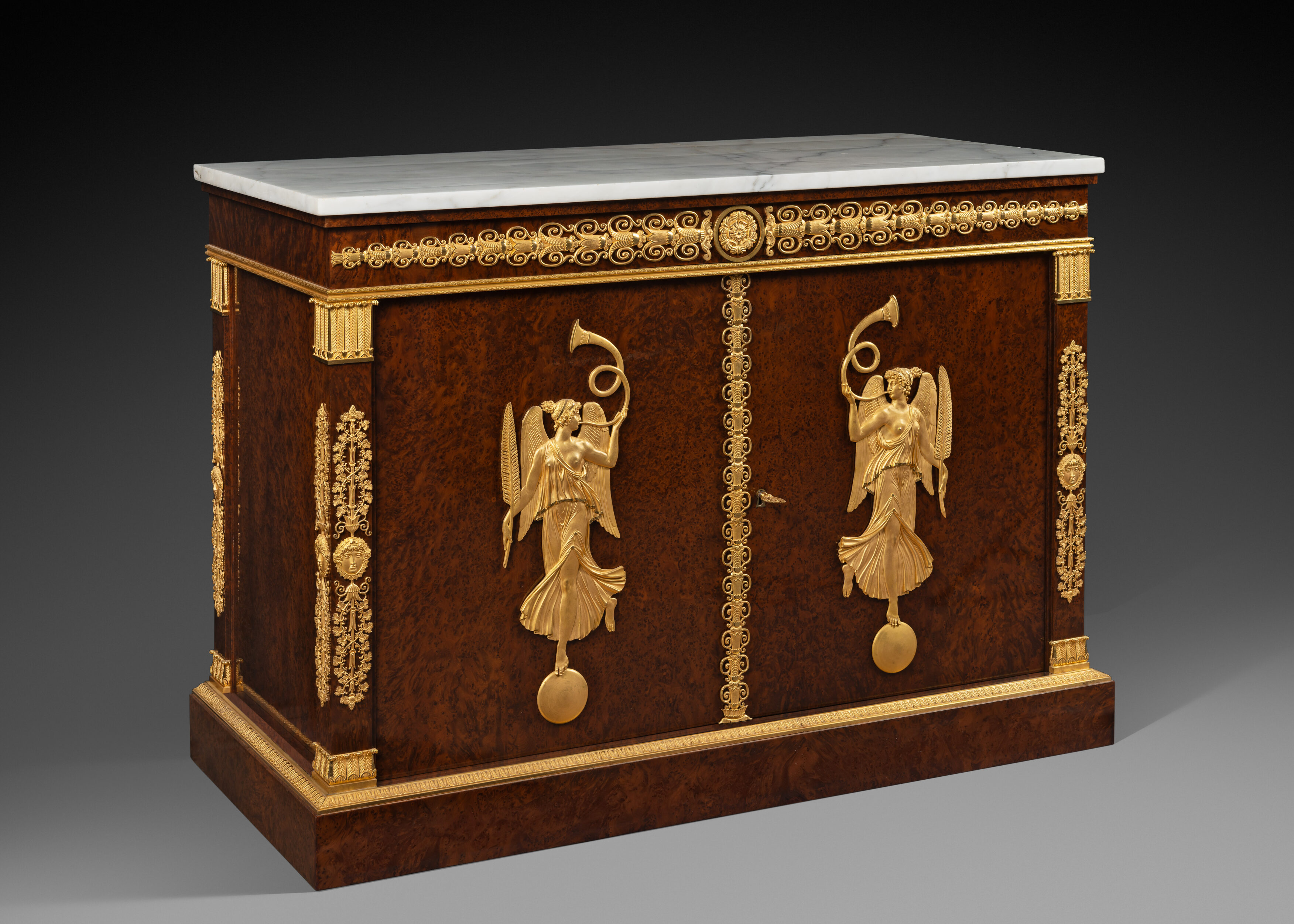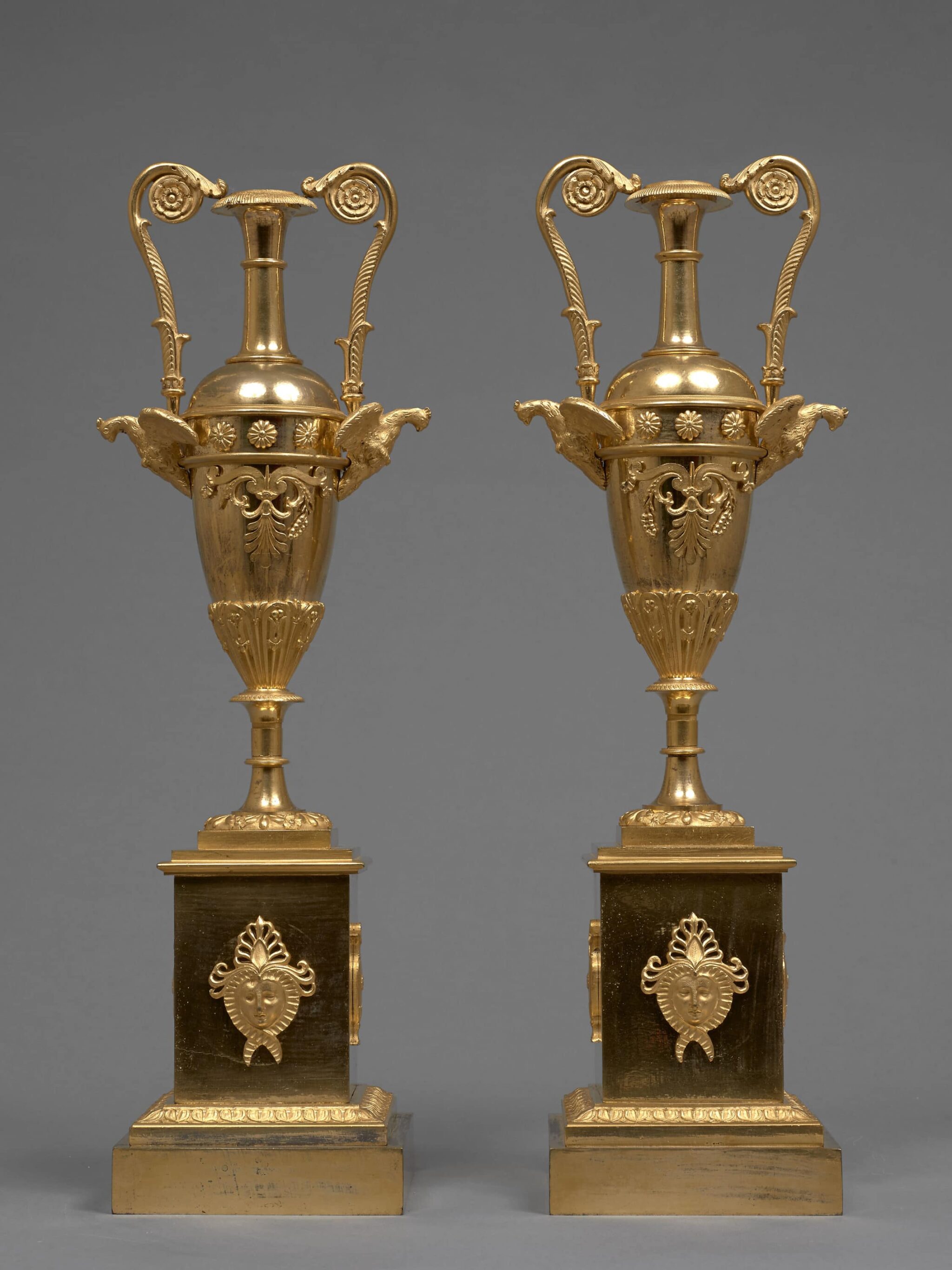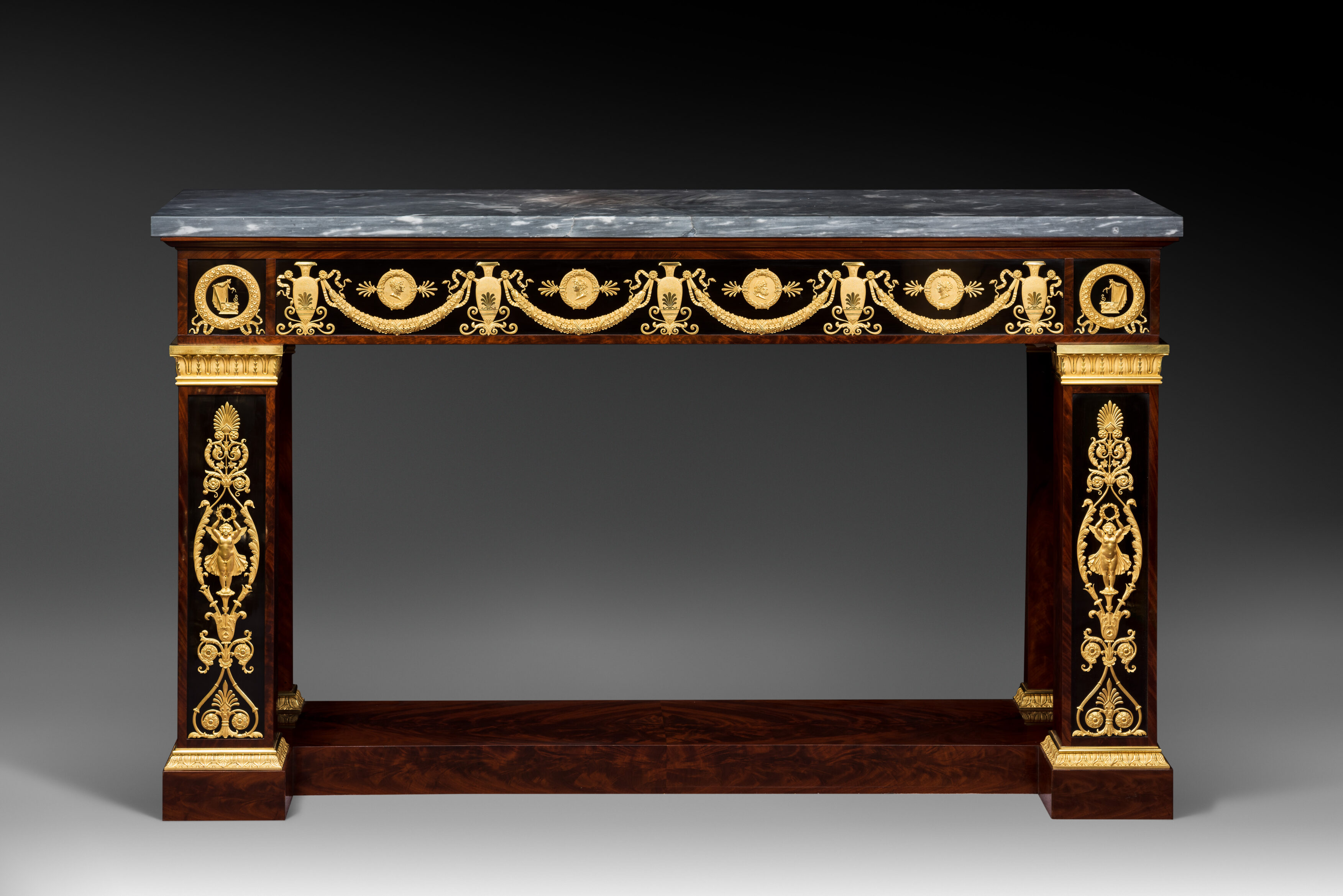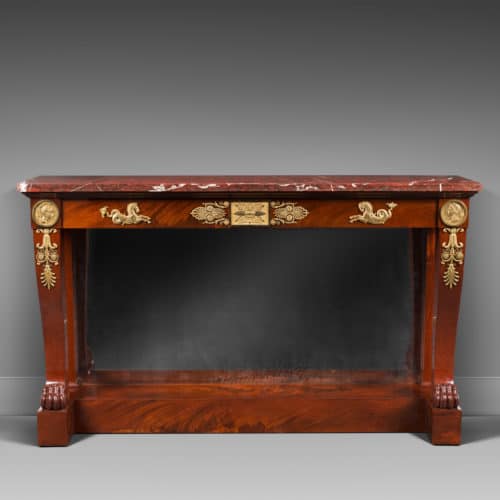Important Suite of Three Mahogany, Mahogany-Veneered, and Gilt Bronze Consoles
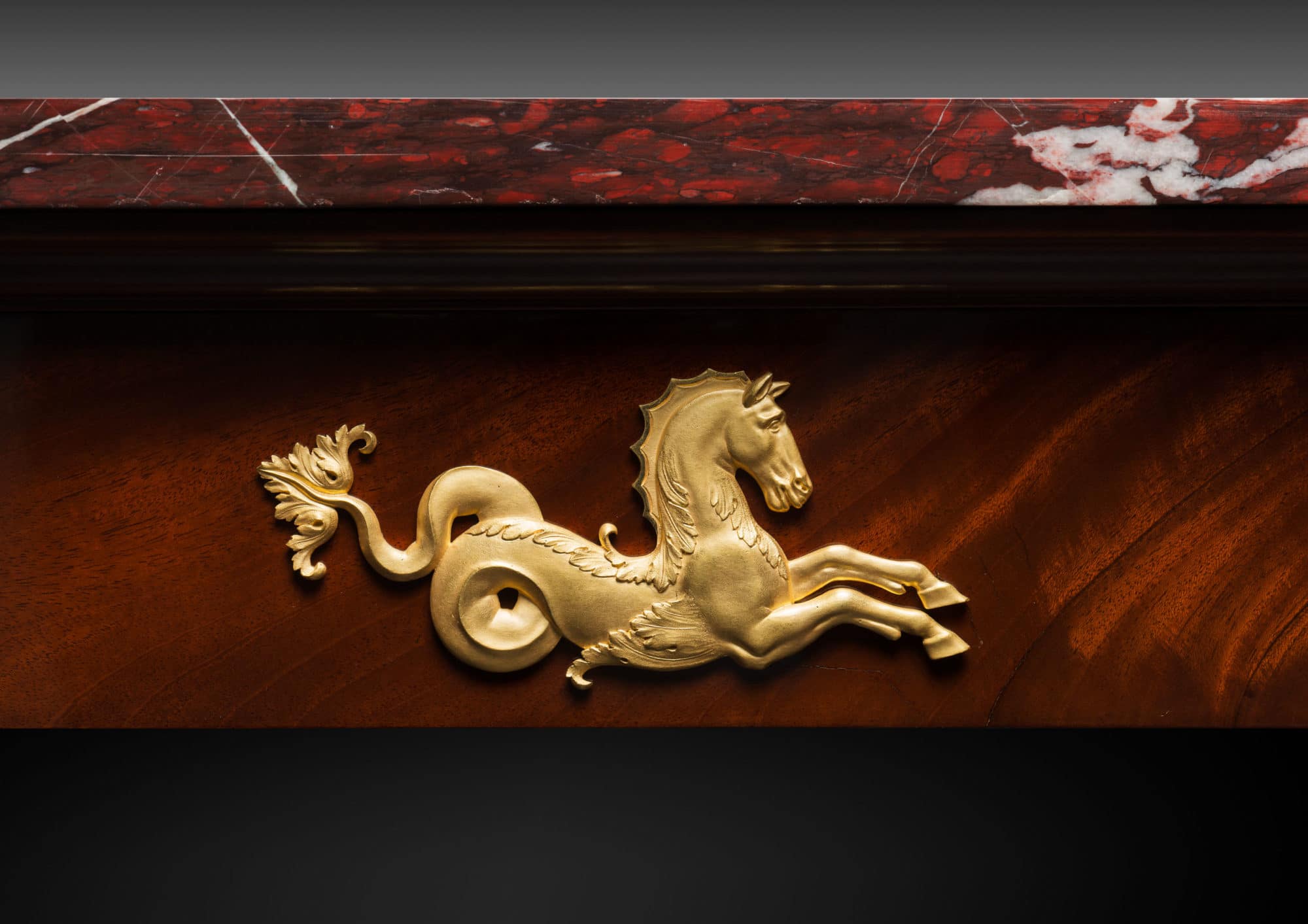
Stamps: JACOB D.R. MESLEE
Paris, Empire period, circa 1805
Provenance:
Bertin de Veaux Collection in the Château de Villepreux, Yvelines.
These three mahogany and mahogany veneer consoles, comprising a large central console and two lateral consoles, have a simple, unadorned design that is embellished by fine chased and gilt bronze mounts. The aprons, which have protruding sides, rest upon two sloping front legs that terminate in lion’s claws, and two back pilaster legs with molded bases. The solid bases are recessed. Each console has a rectangular Italian red griotte marble top and is elaborately decorated with gilt bronze motifs, such as medallions with male profiles wearing helmets and classical women, palmette motifs emerging from acanthus scrolls terminating in volutes centered by rosettes, seahorses, and a plaque with double thunderbolts framed by palmettes.
This very important suite of three consoles is a typical example of the Napoleonic esthetic. The Emperor appreciated unadorned, masculine design, decorated only with very high quality bronzes.
Very few similar consoles are known to exist today; all are stamped by or attributed to Jacob-Desmalter. One such example was removed in 1804 from General Moreau’s mansion in the rue d’Anjou, to be placed in the apartments of Cardinal Fesch in the Palais de Fontainebleau (illustrated in J-P. Samoyault, Fontainebleau, Musée national du Château, Catalogue des collections de mobilier, Meubles entrés sous le Premier Empire, RMN, Paris, 2004, p. 126, catalogue 63). A second piece was delivered in 1811 for the Petit Trianon (see D. Ledoux-Lebard, Versailles, Le Petit Trianon, Le mobilier des inventaires de 1807, 1810 et 1839, Les éditions de l’Amateur, Paris, 1989, p. 140). One further pair of consoles with no bronze mounts was purchased in 1924 by the Prince d’Essling and is now in the Villa Masséna in Nice (illustrated in L. Mézin, La Villa Masséna du Premier Empire à la Belle Epoque, Editions Somogy, 2010, p. 74-75).
Jacob-Desmalter (1770 - 1841)
François-Honoré-Georges Jacob, dit Jacob-Desmalter may be considered to be the most important Parisian chair makers of the first quarter of the 19th century. The youngest son of the famous cabinetmaker Georges Jacob (1739-1814), in 1798 he married Adélaïde-Anne Lignereux, the daughter of the famous merchant Martin-Eloi Lignereux. He first became known for his talent as a draughtsman, and in 1796, he went into partnership with his older brother Georges II Jacob (1768-1803). Together they took over their father’s workshop in the rue Meslée, calling their firm Jacob Frères. After the death of his brother, Jacob Desmalter went into partnership with his father, who had begun working again, and changed his stamp. For nearly a decade, they were important suppliers of the Imperial Garde-Meuble, as well as of influential collectors of the time. However, in 1813 the Jacob firm went bankrupt, due largely to the Imperial administration’s failure to pay them regularly. In 1825, after several failed attempts at recovery, he sold his business to his son in exchange for a comfortable life annuity of 6,000 francs per year. Finally free of the demands of running a business, he began to travel, going to England, where George IV asked him to help decorate Windsor castle. He died in the rue Cadet in Paris, on August 15, 1841.
